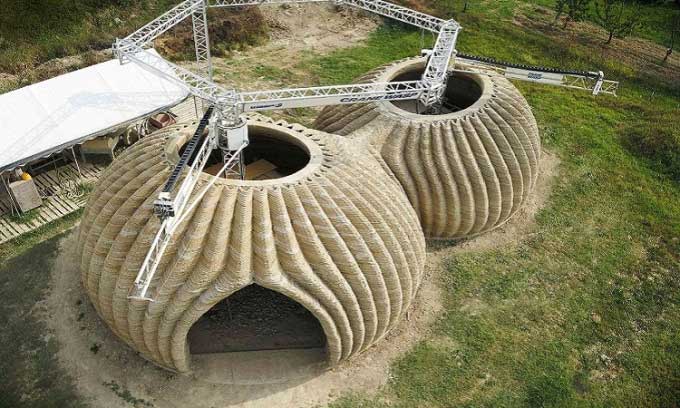The world’s first sustainable houses are 3D printed using locally available soil, providing shelter for people who have lost their homes due to natural disasters.
The innovative 3D printed house design is the brainchild of architect Mario Cucinella. He hopes that this advanced construction technology can help address homelessness. Cucinella named the design TECLA, reflecting the combination of technology and clay.

3D printed houses designed by Mario Cucinella. (Photo: WASP).
“TECLA will shape the future by transforming ancient materials with the technology we have available today. The aesthetic aspect of the house is a blend of engineering and materials. Our goal is to meet Europe’s zero-emission target by 2030,” Cucinella stated.
The first cluster of dome-shaped houses was built in Massa Lombarda, near Ravenna, Italy, using multiple 3D printers operating simultaneously. In its most basic form, the houses can be created in just 200 hours of printing. The 60m2 prototype is constructed layer by layer without the need for a framework. The house consists of two interconnected circular structures. Cucinella did not disclose the construction costs. Inside the house, there is a living room, bathroom, and bedroom, along with furniture such as tables and chairs, also created using 3D printing.
According to Cucinella, the advantage of the design is that in the event of a natural disaster, architects can simply use a 3D printer to rebuild homes for victims who have lost their shelter. The printer can also adjust the type of dome according to the environment where earthquakes, tsunamis, or floods occur.
“If designing a house in a hot and humid climate, I need to ensure the house is well-protected and make the walls thicker for ventilation,” Cucinella explained. He hopes to find ways to collect and filter rainwater for the house. The project was chosen as a pioneering example of carbon-neutral construction at Build Better Now, a virtual exhibition at the COP26 climate change summit in Glasgow.

















































